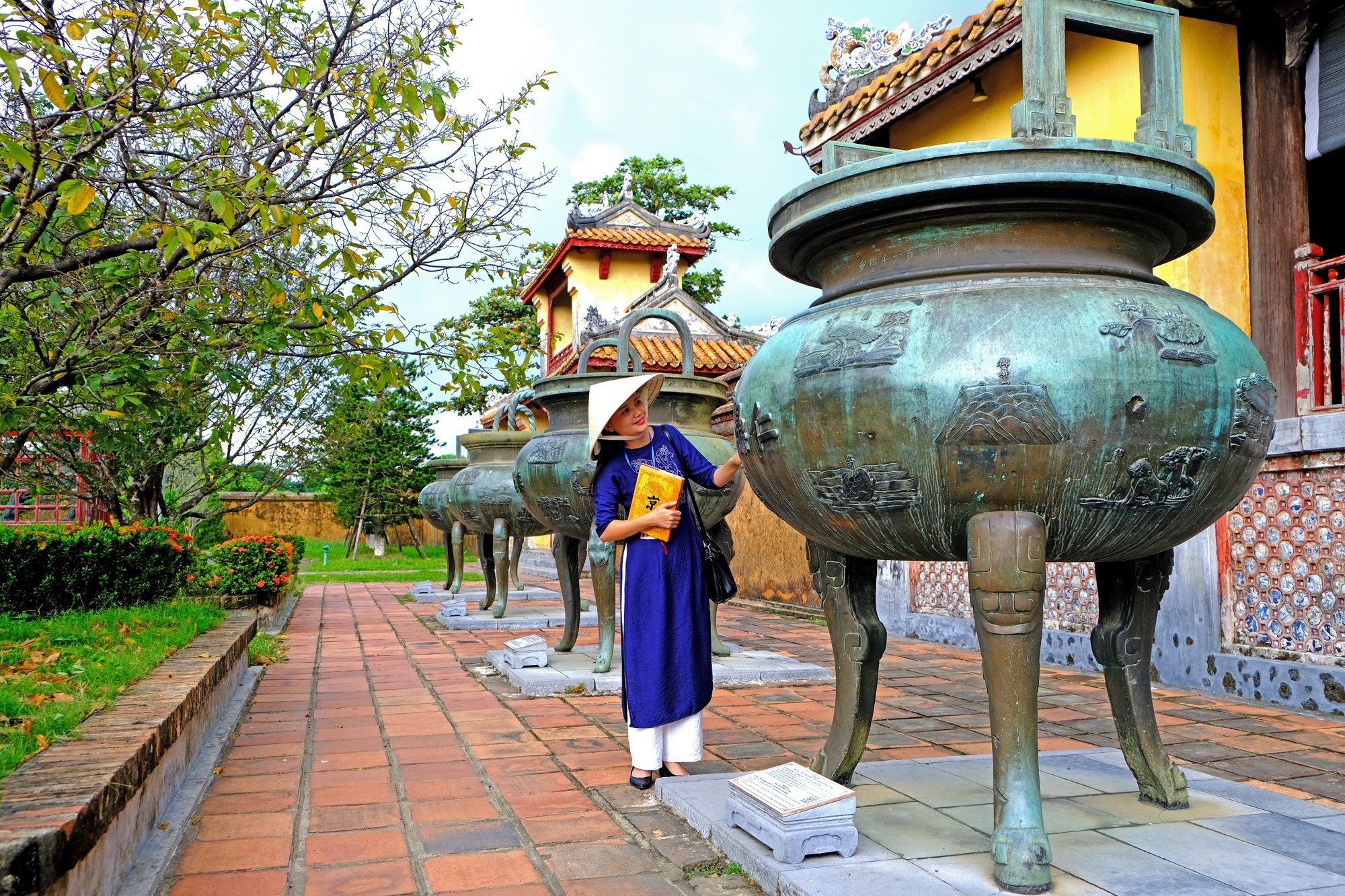Vo Le Nhat, director of the center — which is responsible for managing, preserving, restoring, and promoting values of the Hue Monuments Complex in Hue City of central Thua Thien-Hue Province, on Wednesday afternoon said it is seeking comments and guidance from the Vietnamese Ministry of Culture, Sports, and Tourism before submitting the application to the UNESCO.
Comparative cultural studies in Japan, China, and South Korea showed that the set of nine tripod cauldrons currently displayed in the citadel of Hue is the only existing one of its type.
The set of nine tripod cauldrons is placed at the Imperial City’s The Mieu yard, a place to worship the kings of the Nguyen Dynasty — the last feudal regime of Vietnam.
Made in 1836, these bronze urns are intricately carved with patterns and designs depicting the beauty of Vietnam, including the country’s Hoang Sa (Paracel) and Truong Sa (Spratly) archipelagoes.
The highest cauldron is 2.5 meters high versus the shortest at 2.3 meters high.
The set of nine tripod cauldrons was recognized as national treasures in 2012.
The Hue Monuments Conservation Center is confident that the aforementioned factors qualify these urns as world documentary heritage in accordance with the criteria set by the UNESCO’s Memory of the World Program.
In addition to the set of nine tripod cauldrons, the Imperial Citadel of Hue boasts many other ancient works and items under the Nguyen Dynasty.
Among those, the woodblocks used to print books of Han characters, or adapted Chinese characters, were recognized as the world’s documentary heritage by the UNESCO in 2009, and the imperial records and literature on the royal architecture were acknowledged with a similar title by the Memory of the World Committee for Asia and the Pacific in 2014 and 2016, respectively.
Like us on Facebook or follow us on Twitter to get the latest news about Vietnam!




